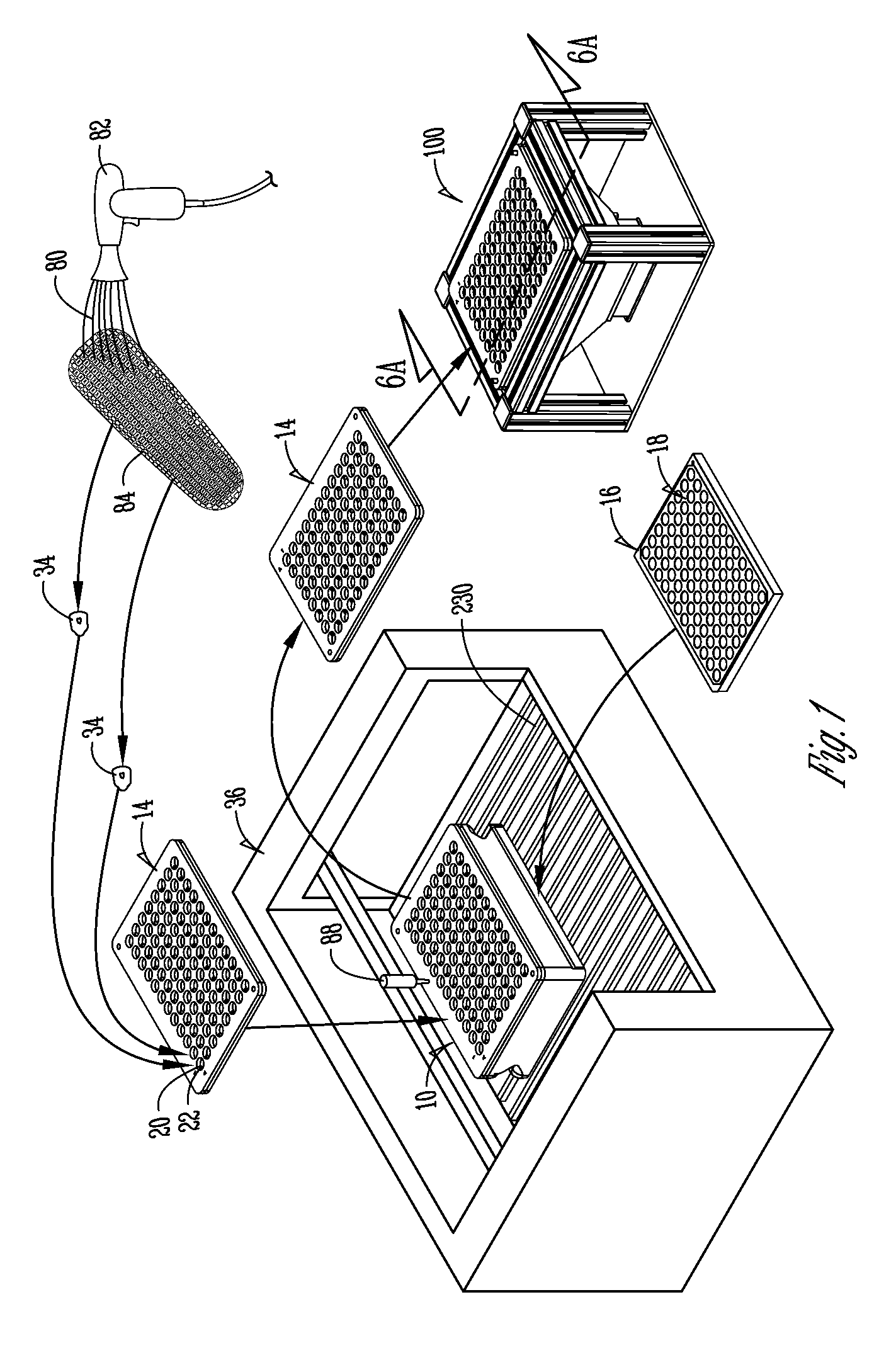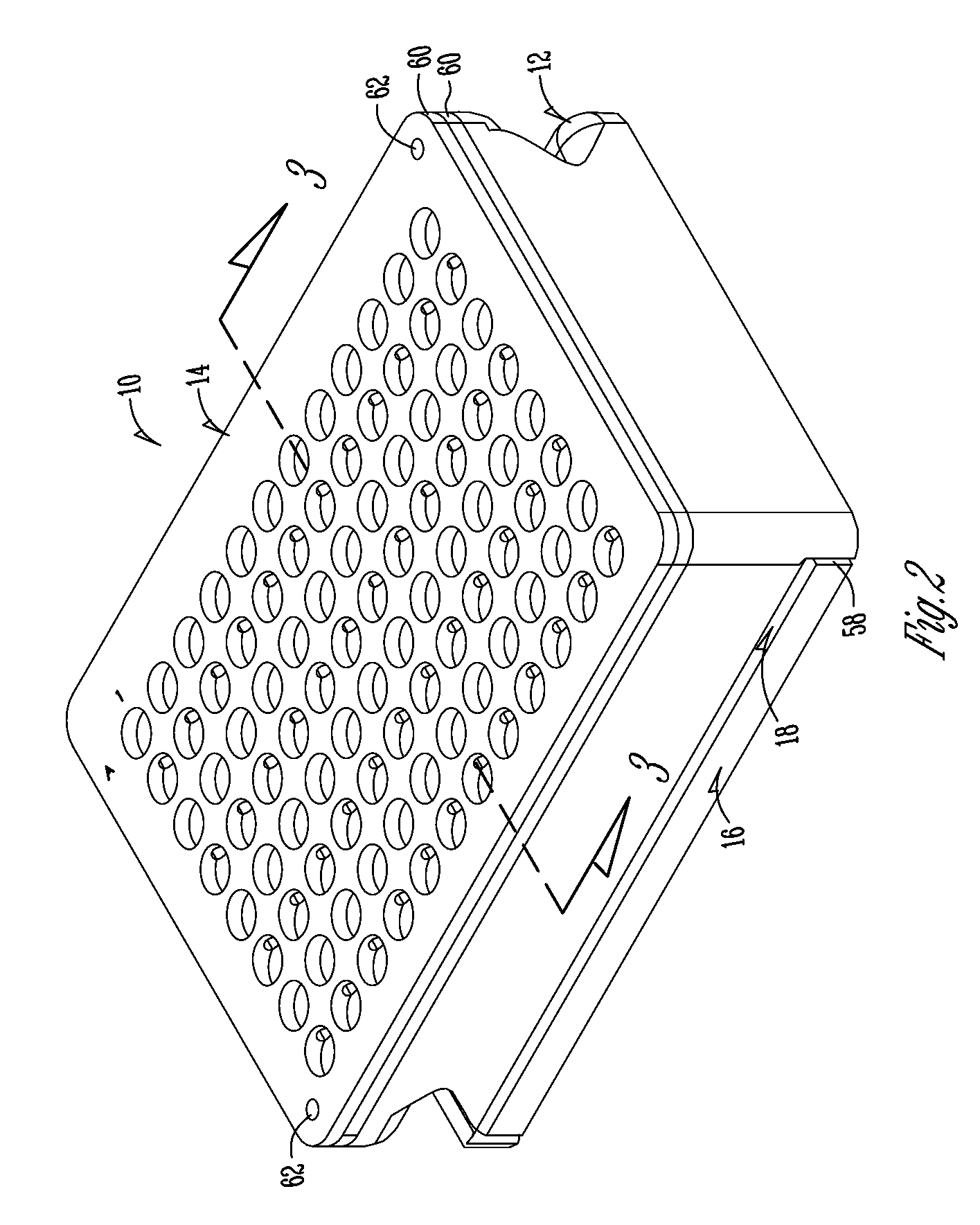Apparatus, method and system for creating, handling, collecting and indexing seed and seed portions from plant seed
a technology of plant seed and apparatus, applied in the field of apparatus, collecting and indexing seed portions, can solve the problems of large waste of seed, large amount of seed, labor and material resources expended in growing, harvesting, post-harvest processing, etc., and achieve efficient and controlled post-sampling handling and limited contamination
- Summary
- Abstract
- Description
- Claims
- Application Information
AI Technical Summary
Benefits of technology
Problems solved by technology
Method used
Image
Examples
Embodiment Construction
Overview
[0067]For a better understanding of the invention, several exemplary embodiments will now be described in detail. It is to be understood that these are but several forms the invention can take and do not limit the invention. Reference will be taken from time-to-time to the appended drawings. Reference numerals are used to indicate certain parts and locations in the drawings. The same reference numerals will indicate the same parts and locations throughout the drawings unless otherwise indicated.
[0068]The context of these specific examples will be with respect to kernels of corn. It is to be understood, however, that this example is only intended to illustrate one application of the invention. The invention can be utilized for other seed and other objects. The range of sizes can vary as well as the nature of the object. As will be understood by one of skill in the art, the embodiments of the invention will be used with seed that are of convenient size to be sampled. Some seed...
PUM
| Property | Measurement | Unit |
|---|---|---|
| weight | aaaaa | aaaaa |
| pass energy | aaaaa | aaaaa |
| energy | aaaaa | aaaaa |
Abstract
Description
Claims
Application Information
 Login to View More
Login to View More - R&D
- Intellectual Property
- Life Sciences
- Materials
- Tech Scout
- Unparalleled Data Quality
- Higher Quality Content
- 60% Fewer Hallucinations
Browse by: Latest US Patents, China's latest patents, Technical Efficacy Thesaurus, Application Domain, Technology Topic, Popular Technical Reports.
© 2025 PatSnap. All rights reserved.Legal|Privacy policy|Modern Slavery Act Transparency Statement|Sitemap|About US| Contact US: help@patsnap.com



